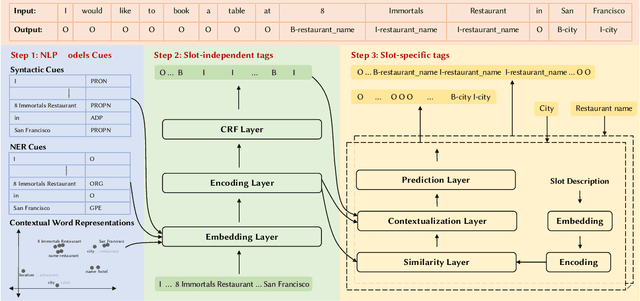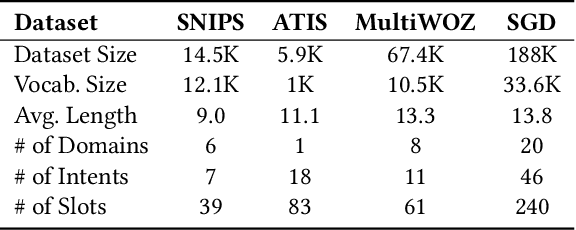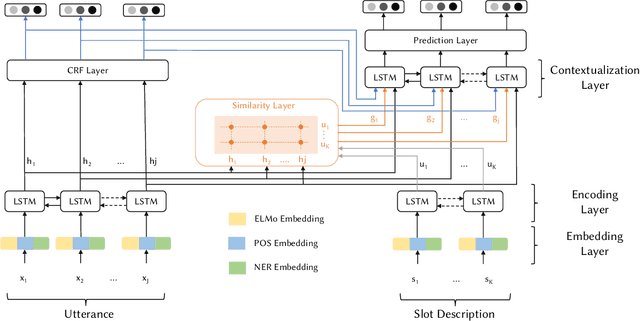Linguistically-Enriched and Context-Aware Zero-shot Slot Filling
Paper and Code
Jan 16, 2021



Slot filling is identifying contiguous spans of words in an utterance that correspond to certain parameters (i.e., slots) of a user request/query. Slot filling is one of the most important challenges in modern task-oriented dialog systems. Supervised learning approaches have proven effective at tackling this challenge, but they need a significant amount of labeled training data in a given domain. However, new domains (i.e., unseen in training) may emerge after deployment. Thus, it is imperative that these models seamlessly adapt and fill slots from both seen and unseen domains -- unseen domains contain unseen slot types with no training data, and even seen slots in unseen domains are typically presented in different contexts. This setting is commonly referred to as zero-shot slot filling. Little work has focused on this setting, with limited experimental evaluation. Existing models that mainly rely on context-independent embedding-based similarity measures fail to detect slot values in unseen domains or do so only partially. We propose a new zero-shot slot filling neural model, LEONA, which works in three steps. Step one acquires domain-oblivious, context-aware representations of the utterance word by exploiting (a) linguistic features; (b) named entity recognition cues; (c) contextual embeddings from pre-trained language models. Step two fine-tunes these rich representations and produces slot-independent tags for each word. Step three exploits generalizable context-aware utterance-slot similarity features at the word level, uses slot-independent tags, and contextualizes them to produce slot-specific predictions for each word. Our thorough evaluation on four diverse public datasets demonstrates that our approach consistently outperforms the SOTA models by 17.52%, 22.15%, 17.42%, and 17.95% on average for unseen domains on SNIPS, ATIS, MultiWOZ, and SGD datasets, respectively.
 Add to Chrome
Add to Chrome Add to Firefox
Add to Firefox Add to Edge
Add to Edge